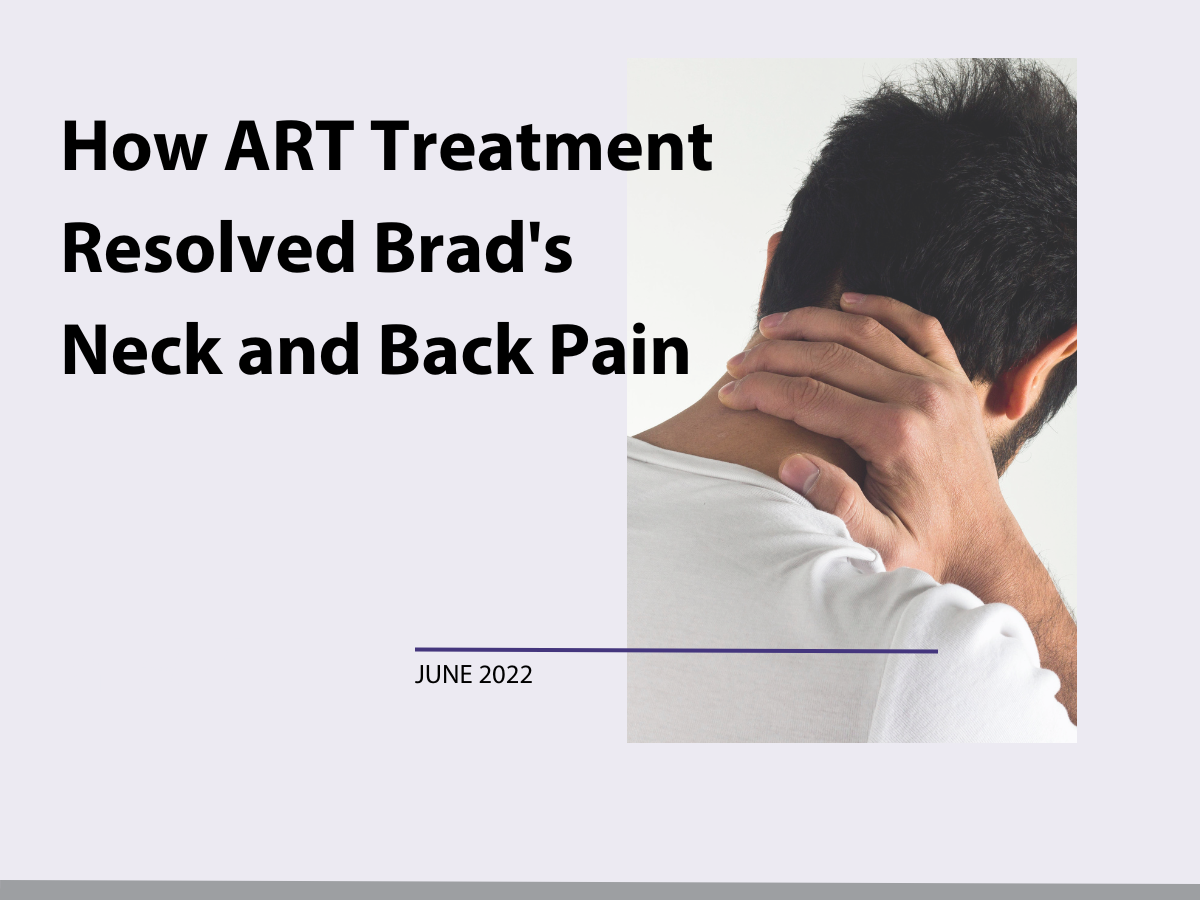ART Treatment Resolved Years of Pain
As part of our Advanced Full Body Online seminars, we invite patients experiencing soft-tissue or nerve dysfunction to be treated by Dr. P. Michael Leahy. The goal of this segment is two-fold: help patients feel better faster with ART treatment and teach ART Certified Providers™ how to use ART treatment in a real, clinical setting.
The patient
Brad Hale was a part of ART’s Patient Case Studies in June 2022, joining us with two issues causing pain, a neck and back injury.
The neck injury was from being hit from behind during a game in elementary school.
The back pain came on suddenly while moving to a standing position after sitting for a long period of time. The pain immediately affected his walking.
The symptoms
Brad reported having occasional flare-ups in his neck and a pinching sensation when he turns his head. His neck is always stiff.
After the back pain began, the discomfort occurred after normal activities like walking, stretching, and exercising. The pain from exercising even stopped him if it felt severe enough.
The observations
Before Dr. Leahy jumped into performing ART treatment on Brad, he mentioned Brad’s slouched posture and that the lower part of his spine was flexing forward.
Everything described by Brad led Dr. Leahy to believe that the two major hip flexors and iliacus tightened with movement, causing resistance in the spine when it is extended.
It was noted Brad’s lower cervical spine was flexed forward and the upper cervical spine was overcompensating for that by extending.
Cervical nerve 7 (C7) was tensing, so the rest of Brad’s spine was closing down, leading up to his shoulder.
Dr. Leahy notes these observations but states it could be different once he begins treatment.
The treatment
ART Certified Providers™ follow a diagnostic process unique to Active Release Techniques® (ART®) treatment.
What is ART treatment?
ART treatment is a non-invasive system that treats soft-tissue and nerve dysfunction at the source. This hands-on treatment uses a combination of provider touch, depth, and tension with patient movement to pinpoint and treat the origin of the affected area.

A patient-friendly explanation of the ART Diagnostic Algorithm to explain the process of ART treatment.
Step 1: Find the source of pain.
Neck injury
To understand the source of pain in Brad’s neck, Dr. Leahy palpated Brad’s neck as he moved his head forward and backward.
Lower back injury
To test where the pain was coming from in his lower back, Brad replicated how the injury formed, going from sitting to standing.
Step 2: Feel for contributing sources.
Neck injury
Dr. Leahy’s initial observations were correct, Brad’s C7 was jammed forward.
Dr. Leahy found the longus colli and longus capitis were locked while C7 was still jammed forward. Because of that, Brad’s shoulder tightened up and pressure was put on the nerves.
Lower back injury
The pain was coming from both sides of Brad’s hips.
Step 3: Treat the problem.
Neck injury
Dr. Leahy utilized ART protocols to treat Brad’s neck. After treatment, Brad tilted his head back and forth again to test Dr. Leahy’s progress and mentioned it already feeling better.
Then Dr. Leahy began working on Brad’s shoulder to resolve every contributing source to his pain.
Lower back injury
To clear up the back pain, Dr. Leahy used protocols surrounding the anterior iliac of the hip, working both sides. Each ART protocol requires specific patient movement, making Brad an active participant in his treatment.
The results
After Dr. Leahy used the ART Diagnostic Algorithm for Brad’s neck and lower back pain, he could move pain-free.
Want to witness the magic of ART treatment for yourself? Watch the full video on YouTube.
